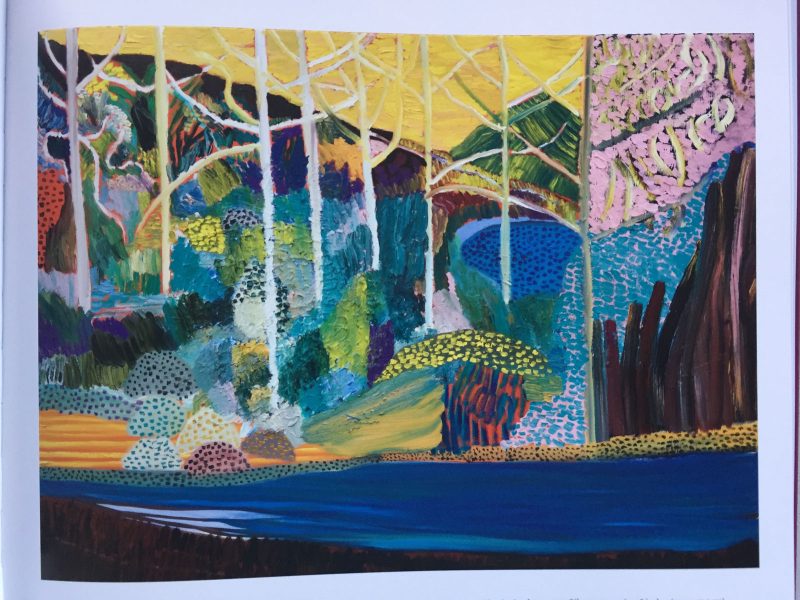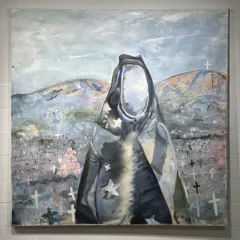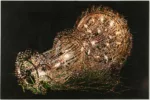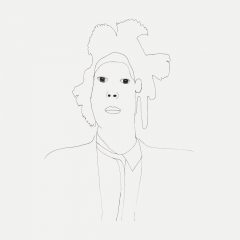Mary Savig Artful Cats; Discoveries from the Smithsonian’s Archives of American Art (Princeton Architectural Press and Archives of American Art, New York and Washington, D.C.; 2016) ISBN 978-1-61689-790-1
Thriftbooks; Amazon
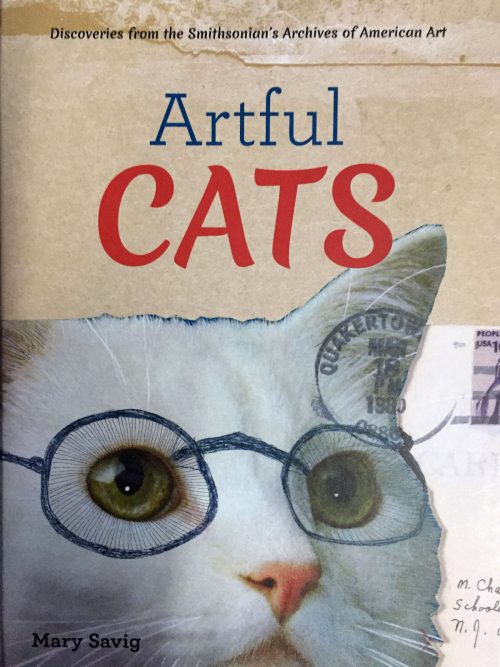
Any art lover who owns a cat will enjoy this book, whose illustrations are drawn from the Archives of American Art. Cat-generated giftables tend to be cute; this book is not. In a series of one and two-page spreads it offers insights about each artist’s life, works and temperament. In a photograph by Arnold Crane, Berenice Abbott seems to be hiding behind her remarkably-large, if unnamed pet, while an eighty-one year old Louise Nevelson, photographed by Geoffrey Clements, stands in front of one of her monumental works, holding Fat-Fat–black and long-haired–as part of her public persona, along with her turban, false eyelashes and enormous neck scarf.
Some artists, of course, used their pets as models. Romare Beardon sketched his adored cat, Gipo, on a scrap of paper on which he’d written bibliographic references and a bit of arithmetic he didn’t want to do in his head. It’s hard to imagine what the postman thought about the letter Lenore Tawney sent a friend; the addressee is noted in an area barely larger than the stamp above, while a drawing with a cat occupies the rest of the envelope. The book will also entertain those who like to read other people’s mail. There’s a letter Edward Weston sent Charles Sheeler, another from Judy Chicago to Lucy Lippard, and two illustrated letters Moses Soyer sent to his son, who was away at camp. And good archivist that the author is, she provides transcripts of the hand-written letters such as the one Georgia O’Keeffe sent to her friend, the painter Cady Wells.
Anne Grosfilley, African Wax Print Textiles (Prestel Publishing, Munich: 2018) ISBN 978-3-7913-8436-8
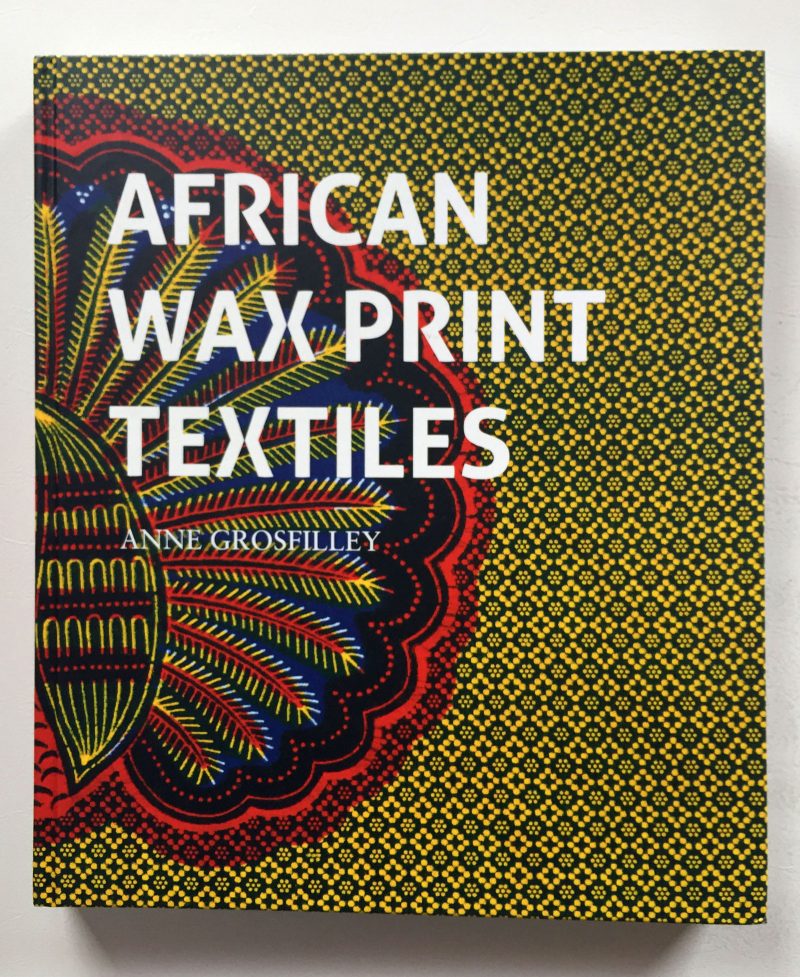
Readers interested in textiles will love this book about the highly-patterned, machine-woven cotton textiles widely associated with West Africa. Many will value it for the illustrations alone, and rightly so. They include a large number of textile patterns, often in multiple colorways; more unusual are the images of fabric factories, vendors, wearers, designer creations and a number of examples by the most valued Dutch producer, Vlisco, alongside Chinese copies which are sometimes passed off as the real thing.
I’ve been fascinated by these textiles for years and acquired everything written about them, but this is the book I’ve been waiting for. Prior serious scholarship focused on handmade textiles of Africa, not these machine-made products, largely produced for export. This is written by an ethnographer, so it covers not only wax prints’ well-known history–the Dutch and English learned the batik technique from their Indonesian colonies and created variants which they then exported to West Africa–but also their current production, distribution, use in clothing, and the questions of identity that circle around them. The book explains the sources of many of the patterns which refer to traditional African objects, such as royal scepters and stools, and to contemporary concerns such as political figures, social campaigns, current events and common sayings and allusions. It reveals an image of a bird escaping a cage that implies a wife’s threat that “if you go out, I’ll go out,” while a design known as “Madame Therese’s nails” refers to the first lady of the Congo who threatened to attack her husband’s reported mistress.
Todd Bradway, ed. Landscape Painting Now; From Pop Abstraction to New Romanticism (D.A.P., New York: 2019) ISBN 978-1-942884-26-2
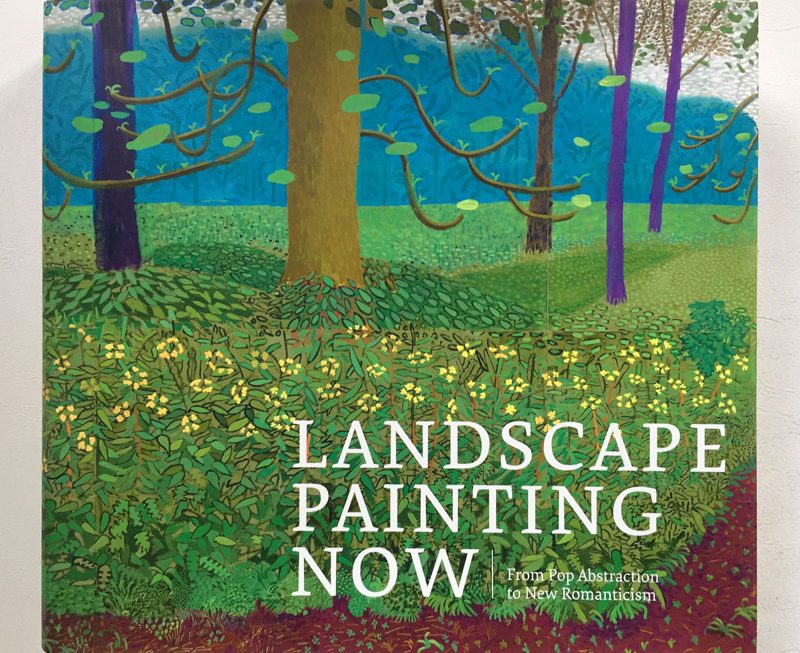
This beautifully produced volume surveys landscape paintings in a wide variety of styles by eighty international artists working since the turn of the millennium. It includes several generations of artists and while some are expected choices, such as Anselm Kiefer, David Hockney, Rackstraw Downes and Jane Freilicher, others such as Alfredo and Isabel Aquilizan, Eggert Pétursson and Tim Gardner are hardly household names. Some of the choices, such as paintings by Lisa Yuskavage and Barkley Hendricks, are surprising because the artists are best known for work in other genres. With paintings by Vincent Desiderio, Neo Rauch and Hurvin Anderson, the surprise comes from the choice to situate them as landscapes, since they also feature human figures that function as considerably more than staffage.
This is primarily a picture book, and well justified by its illustrations, but it includes an essay by Barry Schwabsky covering the history of landscape painting and there are short introductions for each of the artists as well as biographical information. The book demonstrates the range of ideas with which artists invest landscapes beyond either realistic representation or romantic escapism. These include the political implications of Yishai Jusidman’s views of Nazi concentration camps sites, the social commentary of George Shaw’s banal, working class neighborhoods, Li Dafang’s critique of post-industrial, despoiled land, Pat de Groot’s analogy between landscape and mandalas created for religious meditation, and Kay WalkingStick’s re-insertion of indigenous populations into their former homelands.
